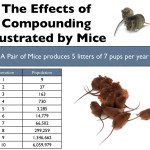This article first appeared in TheBlaze.com on September 17, 2013
 Obamacare is right around the corner, with most of the Affordable Care Act (ACA) policy changes taking place in early 2014. But one recent change to the ACA could drastically affect many individuals who thought their employer would provide the requisite coverage.
Obamacare is right around the corner, with most of the Affordable Care Act (ACA) policy changes taking place in early 2014. But one recent change to the ACA could drastically affect many individuals who thought their employer would provide the requisite coverage.
A major component of the ACA is the requirement of organizations with 50 or more employees to provide health insurance benefits to their full-time staff. However, this component was postponed until January 1, 2015. That means that the employees of companies who fall into this category may not immediately receive health benefits through their employer or coverage that is sufficient to meet the criteria, and will be required to either purchase individual health insurance by March 31, 2014 or pay a fine that will be collected when filing 2014 income taxes.
This delay will end up directing more people into the new federal and state insurance exchanges, or “Health Insurance Marketplaces.” Plans are available in four tiers of premiums and deductibles designated as “Bronze”, “Silver”, “Gold”, and “Platinum”. Purchasers can compare plans and pick insurance policies that best fit their needs.
The question many people are asking themselves is, “Should I buy health insurance or pay the fee?”



